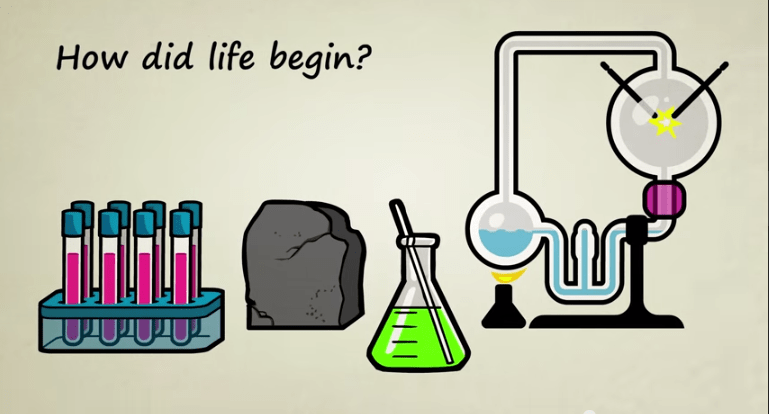

Since its inception in 1924, the Primordial Soup Theory has gained a firm following in scientific circles. The theory states that a young Earth possessed a reducing atmosphere and, following exposure to various forms of energy, basic compounds were formed. These compounds are then said to have accumulated in a ‘soup’ from which life evolved.
The big question this leaves is… How and why did life evolve from this collection of simple elements and compounds? How did it all start? Ultimately, the question revolves around abiogenesis, which is the process by which a living organism forms naturally from non-living matter. Here is a list (in no particular order) of seven existing theories for this initial abiogenesis, and an exciting new one. Fir the purposes of this article, we are looking at how life developed on Earth.
Beneath the Ice
Some evidence indicates that, around three billion years ago, Earth’s oceans were covered with ice. This ice may have been hundreds of metres thick and was mainly due to the sun being much less fierce than it is nowadays. This theory contends that the ice may have protected the compounds, allowing them to interact and, thereby, creating life.
Electricity
Yes, there is a theory that life on Earth began Frankenstein style! It has been proven that electricity can produce simple sugars and amino acids from simple elements in the atmosphere. This leads to the theory that lightning may have been responsible for the origins of life, primarily by striking through rich volcanic clouds.
Panspermia
Now, from the horror of Frankenstein, to the realms of science fiction. Panspermia is the proposal that life on Earth didn’t actually begin on Earth at all. Rocks, and other debris from impacts, are plentiful. In fact, rocks from Mars have been found here on Earth, and it has been suggested they any one of these would have brought microbes that could have kick-started life. So… would that make us all aliens?
RNA
Ribonucleic acid (RNA) is today most known for its role in the expression of genes. To put it simply, DNA unzips, revealing the necessary gene that is being called for by the body, then RNA is transcribed from single nucleotides, copying the revealed segment for gene expression.
This theory states that all life sprouted from a complex RNA world. This is plausible, as RNA is far more self regulating, if less efficient, than DNA.
Simple Metabolism and Reactions
In contrast to the RNA theory, this approach suggests that the primordial soup simply continued to react with itself over time, producing more and more complex molecules, eventually yielding life. This is the most simple of the standing theories, and is difficult to dismiss.
Clay Breeding Ground
Research at the University of Glasgow, in Scotland, has given rise to the theory that life on Earth may have evolved in clay. It is suggested that clay may have served as an area of concentrated chemical activity, providing a breeding ground for DNA and other components.
Submarine Hydrothermal Vents
Submarine hydrothermal vents, or deep-sea vents, contain vast and diverse ecosystems. The nutrient rich environment filled with reactive gases and catalysts, creates a habitat teeming with life. Studies suggest that life may have originated from within these vents, a theory that cannot be ignored, and one that may in fact tie in with the ice theory at the beginning of this article.
The New Theory!
The newest addition to this mix of theories has been clearly articulated by the Massachusetts Institute of Technology in the USA (though a series of individuals have contributed over the years). The contention from supporters of this idea is that life evolved out of necessity, following the laws of nature, rather than through any accident or freak occurrence. In a number of papers, physicists have argued that the occurrence of life is a matter of inevitability, and they have a sound formula to support their claims.
The new(ish) models that physicists have come up with are formulated on previously established theories in physics, and they conclude that matter will generally develop into systems that, when “driven by an external source of energy” and “surrounded by a heat bath,” become increasingly efficient at dissipating energy. Studies have shown that populations of random atoms, when exposed to energy, will shuffle and organise themselves to dissipate energy more efficiently. It is suggested that this re-modelling would eventually lead to life.
So, this new theory may be viewed as an addition to the simple metabolism and reaction theory above, but with energy, such as is provided by the sun, as the catalyst.
This theory was touched upon by Charles Darwin himself, but was dismissed. However, the new research from MIT is backed up by mathematical and scientific evidence. Only time and further research can truly tell if there really is any energy in these claims.